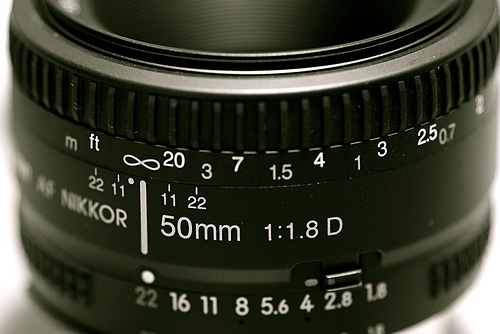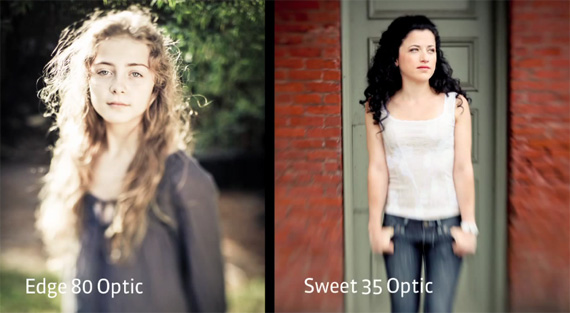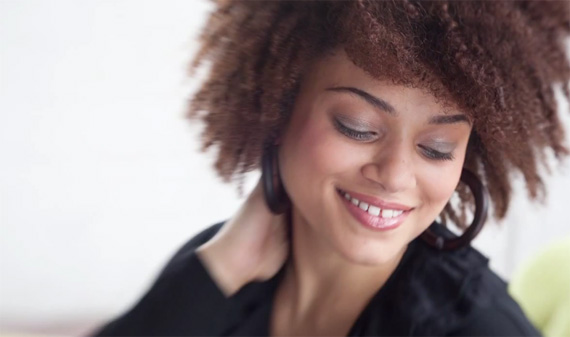Posted: 21 Mar 2012 06:51 PM PDT I went to visit an old friend yesterday who was my main inspiration to get into photography. It seems that he has been taking beautiful photos forever forever and went on to show me his newest gift – a brand new Canon lens – Ultra-Wide 16-35mm f/2.8.  "Nikkor Lens 50mm f/1.8D AF" captured by Romeo E. Catapang Jr. (Click Image to See More From Romeo E. Catapang Jr.) 1) DistortionAll lenses have some kind of distortion. This tends to be manifested most in ultra wide angle lenses, particularly at very wides angles. A good example of this is one picture that I took in Venice. I had walked back as far as possible to fit the entire frame into the photograph and had to use the widest lens angle possible (14mm). You can see the tower on the left hand side appears to be leaning. Clearly, it is not like this (and you’re going to have to believe me that it’s straight), but illustrates the lens distortion that exists.Better quality lenses have less distortion through the use of a greater number of lens elements. Nikon has just released an excellent 14-24mm ultra wide angle lens with very little distortion. The lens has 11 lens elements and weighs a full 1kg. Clearly not a lens to take lightly. While photo manipulation software exists today that can correct lens distortion, it is always better to capture the image as it is. 2) SpeedThe camera lens is responsible for capturing and focusing light onto the camera sensor. Better quality lenses tend to have a larger aperture, allowing more light to pass through to the sensor. The aperture size is measured as an f-stop. Confusingly, the larger the maximum aperture of the lens, the smaller the f-stop.Faster lenses are key to capturing sporting events and wildlife. They are also very handy to have for low light photographs and allow the photographer to rely less on the ISO ability of the camera. 3) VignettingVignetting manifests at the edge of a photograph as darker areas. This is because more light enters the center of the lens than the edges due to poor lens glass or construction quality.4) AberrationThere is chromatic aberration and spherical aberration. Chromatic aberration is a type of distortion in which the lens fails to focus all colors to the same convergence point. This shows up as a discolored edge to objects in a picture. Wiki has a great photographic example of Chromatic aberration and can be found here on Wikipedia.Spherical aberration is distortion caused by the spherical lens shape and occurs when light hits near the edge of the lens instead of the center resulting in some resolution and clarity issues. This occurs more when the aperture of the lens is completely open. In reality, most high quality lenses have a plethora of technologies built into them to reduce aberration through a number of means including lens coatings, advanced construction methods and floating elements. 5) Vibration ReductionMany lenses have vibration reduction built into the lens. Vibration reduction helps to stabilize the lens through a hand held photograph allowing the photographer to take a clear picture at a slower shutter speed than they normally would have been able to. Ironically, vibration reduction on lenses must be turned off for use on a long exposure tripod photograph.Lenses are to cameras as tires are to cars. It’s great to buy a Ferrari, but put shoddy tires on it and the humble Chevy will drive circles around it. In reality, most lenses that you can purchase today (even basic ones) are consistently very good, but many times some extra investment into lenses will yield even better results. About the Author: For more musings on photography, visit the rantings and ravings blog (http://www.learnphotographyalberta.ca) at Learn Photography Alberta. Go to full article: What Makes for a Good SLR Lens? What are your thoughts on this article? Join the discussion on Facebook or Google+ Article from: PictureCorrect Photography Tips |
Posted: 21 Mar 2012 11:42 AM PDT The folks over at Lensbaby have been hard at work developing exciting new creative photography tools. I was initially introduced to Lensbaby products as essential filmmaking tools and I am pleased to see an increase in the Lensbaby’s popularity among portrait photographers. In a series of videos produced by Lensbaby, we are shown different ways in which the unique little lenses and optics can give us, as photographers, a way to shoot outside of the box and capture advanced tilt-shift effects in camera–something that many photographers are accustomed to doing in editing. For example, let’s take a look at this video which showcases a few of the Lensbaby line’s essential pieces (for those of you reading this by email you can see the video here). In that video we were shown what the Edge 80 Optic, Sweet 35 Optic, and the Double Glass Optic are capable of achieving. The Edge 80 Optic is a versatile piece of equipment and probably a good starting point for anyone wishing to get started collecting Lensbaby accessories. It functions as both a standard lens and, when tilted, allows you to also get a that coveted tilt-shift look. The Sweet 35 Optic is also delivers great tilt-shift photographs all the while giving the photographer ultimate control over focal range thanks to the 12 different aperture rings. Of course, the optics are only part of the fun. To use them, you will also need a Lensbaby Lens. Senior portait photographer, Holli True, prefers the Lensbaby Composer Pro as her lens of choice and she usually accessorizes the lens with the Sweet 35 Optic or the Double Glass Optic. The Composer Pro is the top of the line lens and the choice of many professional photographers and videographers alike. It allows itself to be tilted into just about any angle on the 360 degree spectrum. Paired with the Double Glass Optic, it will give you minimal diffusion while still maintaining separation from the blur to the “sweet spot.” Amazon Recap of the Lenses Mentioned:Go to full article: Lensbaby Lens: How to Use Them in Portrait Photography What are your thoughts on this article? Join the discussion on Facebook or Google+ Article from: PictureCorrect Photography Tips |
Tags:
Camera Lens







0 comments:
Post a Comment